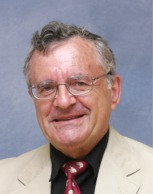Why We Do What We Do – Putting it All Together
By Shlomo Maital
Sometimes things just seem to come together, naturally.
- I recently taught a Workshop for a wonderful group of high school science teachers. They all told me, their key problem is – motivating their students. Motvating them to learn.
- I recently received a research paper from McKinsey, titled “How to improve student educational outcomes: New insights from data analytics”. In this study McKinsey researchers used machine learning (an offshoot of artificial intelligence) to analyze a massive data set — the PISA surveys of 15 year old high school students and their understanding of science and math. The key finding: Student mindsets are twice as predictive of students’ PISA scores than even their home environments. Mindset means “a student’s sense of belonging, motivation and expectations”. This result is robust across the entire world.
The graph shows the % of predictive power of students’ performance. The top two rectangles (orange and purple) represent “mindset” (motivation), for the five different geographical areas.
- My wife’s copy of the American Psychological Association magazine Monitor just arrived. In it, 33 leading psychologists were asked, “What is the next big question psychology needs to answer?” The first person quoted was Stanford Psychologist Carol Dweck, whose work on growth mindsets (the idea that talent and talent can grow in a nurturing education environment) was seminal. She said we need “an integrative theory of motivation” and “a framework for …effective intervention [to boost motivation].
These three circles converge. They teach us that how well we motivate ourselves, and those we work with, are THE crucial variables. Because motivated people can do anything (did you watch the Croatia soccer team at the World Cup?). And those without motivation can do nothing.
Let’s look inward and ask, what lights our spark? And then look outward and ask, how can we light the sparks of others who work with us?




Leave a comment
Comments feed for this article